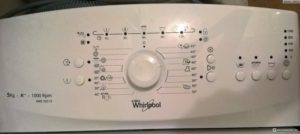 Any sufficiently complex device can fail over time, and a washing machine is no exception. There are different breakdowns, some of them can only be fixed at a service center, but some you can do it yourself. If the Whirlpool washing machine does not spin clothes, you should not immediately call a technician; perhaps the reason for this is not wear of parts, but a normal violation of operating rules.
Any sufficiently complex device can fail over time, and a washing machine is no exception. There are different breakdowns, some of them can only be fixed at a service center, but some you can do it yourself. If the Whirlpool washing machine does not spin clothes, you should not immediately call a technician; perhaps the reason for this is not wear of parts, but a normal violation of operating rules.
Main signs of failure
It seemed that it was easy to determine the quality of the spin operation - if after rinsing the engine spins the drum with laundry as much as possible, the pump turns on, pumping out the water, then everything is fine. In fact, not every owner Whirlpool washing machine sits next to her for hours, watching the process. In this case, the following signs will help identify the problem:
- the washing machine turned off, but there was water in the tank;
- high humidity of laundry after washing;
- loud noise during draining;
- the engine does not spin the drum to the required speed;
- a hum characteristic of spinning is heard, but the drum does not rotate;
- Slow drainage of water.
What could have broken
Before thinking about how to fix a breakdown associated with a poorly functioning spin cycle, you need to figure out what exactly Whirlpool machine parts can call it. You need to understand that a washing machine is a complex device, therefore, the list of possible causes is quite wide. Among other things, the problem may be the following.
- Clogged drain hose, blockage of sewer or siphon. Most often, this is the reason that after completing the program, the Whirlpool machine not only does not spin the laundry, but also cannot drain the water properly.
- Failure of the water level sensor in the tank. In this case, the control module receives incorrect data, the actuators operate normally, but the laundry remains excessively damp.
- Damage or blockage in the drain pump. Water does not leave the tank or leaves too slowly. The drum rotates, performing the spin program, but the laundry, in fact, continues to rinse.
- Various engine or tachogenerator problems. This situation often occurs in models with commutator motors. Wear on the brushes does not allow the motor to spin up to maximum speed, which affects the quality of the spin cycle. A similar situation can arise in the event of failure of the tachogenerator - a sensor that controls and maintains rotor speed.
- Failure of control module circuit elements. The washing machine incorrectly interprets the data received from the sensors, which can result in a number of problems, including the spin not working.
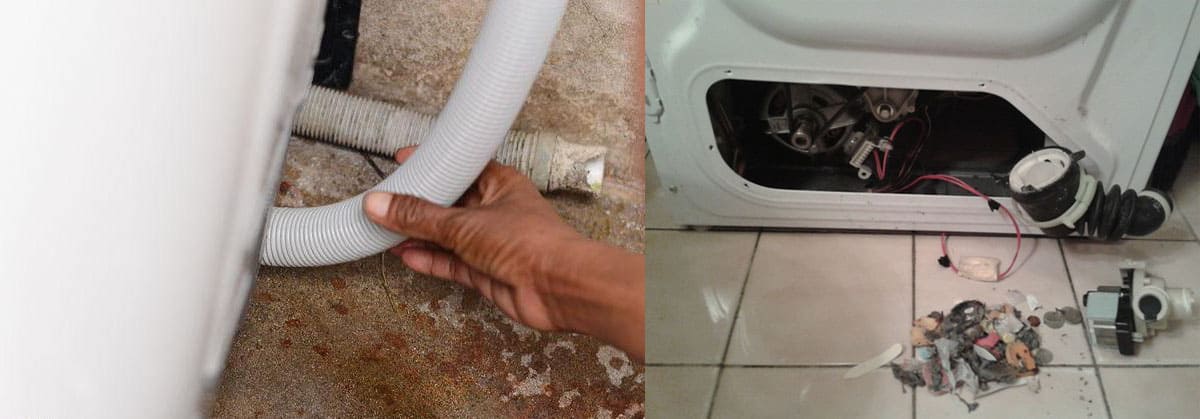
Priority actions
Even if not only the symptoms, but also the error code on the display clearly indicate the presence of a breakdown, you should not immediately take up the tool or take the washing machine for repair. First you need to perform a simple check and make sure that you can’t do without disassembling the machine.
Wrong program selected
A common reason why laundry is excessively damp after washing is simply turning off the spin cycle. Modern Whirlpool models give the user wide scope for setting parameters, as a result of which, intentionally or unintentionally, This mode is disabled. Before you panic, you should take a look at the display panel. If delicate washing or soaking is selected, the machine operates normally.
Imbalance
Washing machines do not like to be overloaded. An excessive amount of laundry in the drum, as well as improper placement of it, can cause rapid wear of the bearings and, consequently, failure of the machine. Often Whirlpool machines slow down the engine speed to avoid breakdowns.
This situation can only arise in the case of older models that do not provide protection against incorrect loading. In any case, if there is an imbalance, it is enough to remove a little laundry, or rearrange it and start the wash again.
Clogged hose or drain
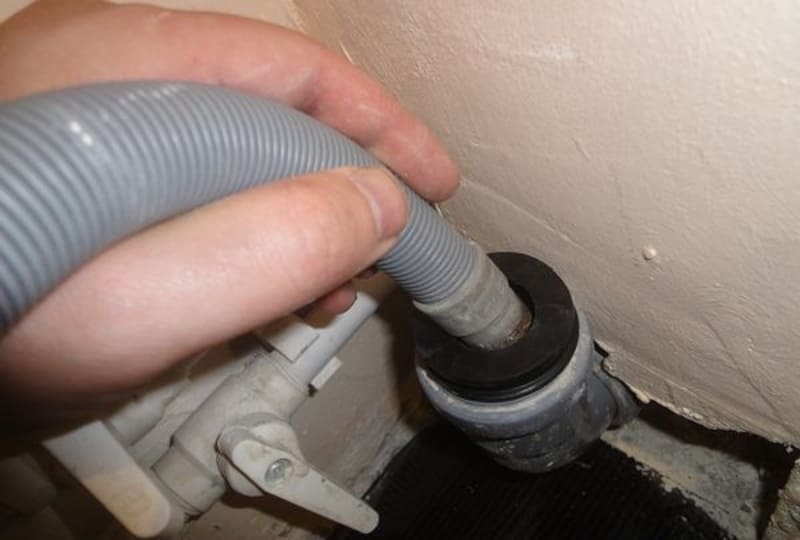
Another reason for poor-quality spinning, which cannot be attributed to breakdowns, is a blockage in the sewer, kinking or blockage of the drain hose. Poor drainage capacity results in slow water removal, high load on the pump and can cause serious damage.
The hose is removed. It is necessary to carefully inspect its surface for kinks. Often the washing machine is installed close to the wall, squeezed into a corner, the hose can be crushed, which reduces its throughput.
Filter is dirty
Another important detail that may be responsible for the slow drainage of water, as a result of a poorly functioning spin cycle, is the filter. Its task is to collect small particles that have come off the laundry during washing. Filter in the washing machine Whirlpool is located at the bottom right of the case. It is covered with a decorative panel.
Before starting work, you need to prepare rags, as well as a container to collect the water that remains in the tank and pipes. The filter is unscrewed, washed, and replaced if necessary.
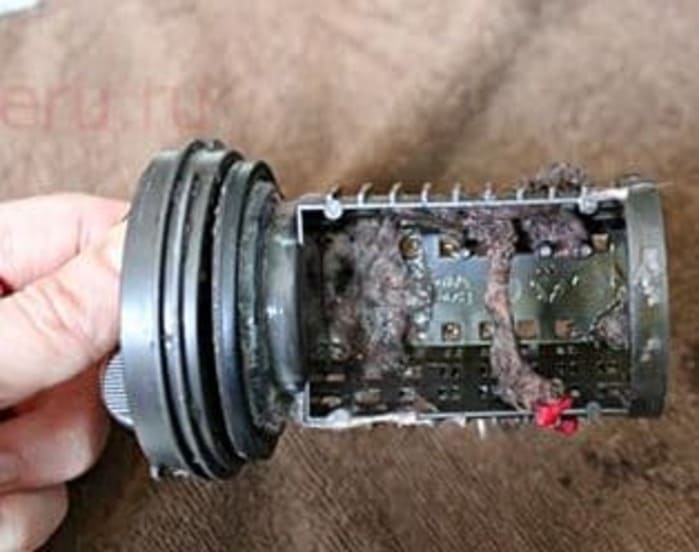
DIY repair
The following steps will require intervention in the design of the washing machine. Before you take active action, you should think carefully; inept actions can significantly worsen the situation, which will cause expensive repairs. Also, do not use the tool if the Whirlpool machine's warranty period has not yet expired. A device with traces of disassembly will definitely not be accepted under warranty.
Those who decide to repair a washing mashine with their own hands should start with preparation. You need to disconnect the device from electricity and water supply. Be sure to move it away from the wall, ensuring ease of use. You should also prepare a small set of plumbing tools, to which add a multimeter for testing electronics and contact pads.
Pump check
Quite often, a Whirlpool washing machine does not spin clothes and does not drain water due to failure or drain pump jamming. It is from checking it that repairs should begin. In general, the work is performed according to the following algorithm:
- unscrew the drain filter;
- collect the water remaining in the pipe;
- put the washing mashine on its side;
- disconnect the wires leading to the pump;
- disconnect the hoses;
- remove the pump.
Structurally, the pump consists of two parts: an electric motor and the pump itself. First you need to check the impeller. Often threads and pieces of laundry get wrapped around it, which leads to difficulty in rotation or jamming. The impeller itself and its shaft are cleaned.
Using a multimeter, you need to ring the motor windings. A break indicates the need for replacement. The new pump is installed in place, the device is assembled in the reverse order, and the spin operation is checked.
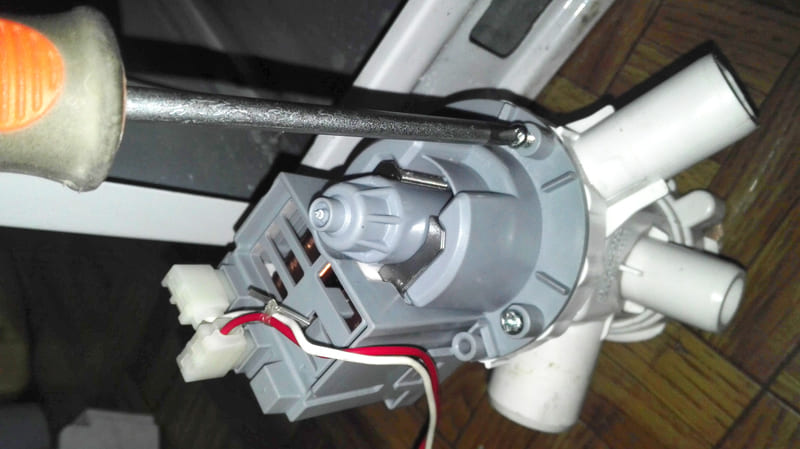
Motor and speed sensor
Older Whirlpool models, in which commutator motors are installed and rotation is transmitted via a belt drive, are most susceptible to breakdowns.Belt slippage, brush wear, contact oxidation - all this can cause malfunctions in the motor and, consequently, poor spin quality.
It's worth starting with the belt. It is inspected for integrity. If there is severe wear or visible damage, replace it. Next you need to check the commutator brushes. Their minimum permissible length is indicated in the accompanying documentation for the machine; as a rule, if it is less than 1-1.5 cm, the brush will have to be changed.
Among other things, you need to pay attention to the internal wiring. The wire must be intact without damage to the insulation or darkening. The last thing to check is the windings; for this you will need a multimeter. If the device shows a gap, the engine must be replaced.
Another part that affects engine operation is the speed sensor. It is also tested, and a new one is installed if necessary.
Pressostat
Plays no less important role in ensuring high-quality spin a pressure switch is a sensor that measures the water level in the tank and transmits data to the control module. Failure of this part leads to the system receiving incorrect information and not giving the command to turn on the drain pump.
To test and replace the water level sensor of a Whirlpool washing machine, you need to do the following.
- Remove water from the tank; to do this, you can unscrew the drain filter.
- Unscrew the retaining bolts and remove the top cover of the washing machine.
- Find the pressure switch. This is a round plastic part to which a tube from the tank and several wires are connected.
- Inspect the sensor housing for mechanical damage.
- Disconnect the conductors and measure the resistance between the contacts; a break indicates a failure of the part.
- Disconnect the supply tube and instead put a piece of hose of the same diameter onto the inlet.
- Blow into the tube; characteristic clicks should be heard; if they are not present, the sensor must be replaced.
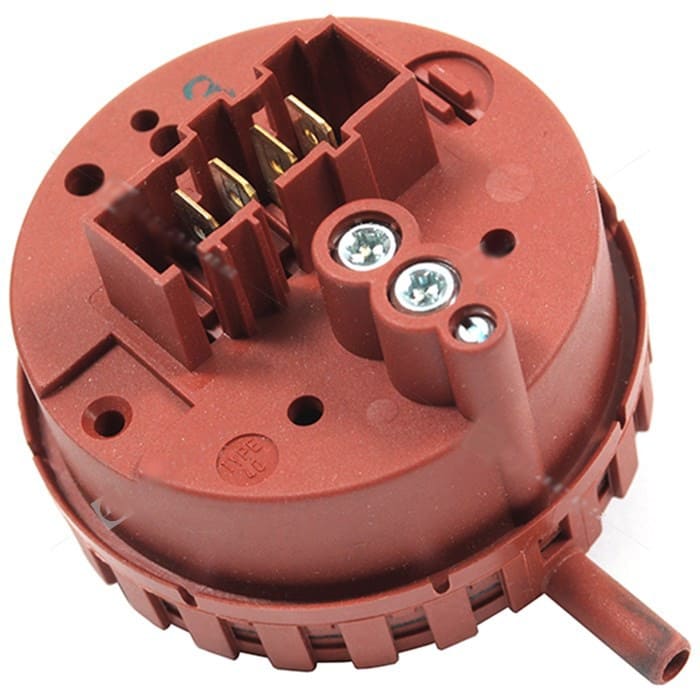
Control module failure
The last component, the failure of which leads to a number of failures, including poor spin quality, is the control module board. This is the most difficult part of the machine; it is unlikely that it will be possible to repair it at home, however, you can try to identify the problem. To do this, remove the board using a powerful magnifying glass and inspect it. It is necessary to pay attention to physical destruction, darkening of circuit elements and connecting tracks, as well as traces of oxidation.
If problem areas are detected, action must be taken. It's up to the owners to decide what to do. The best option seems to be to call a technician or contact a specialized service center.
Whirlpool washing machines are deservedly popular all over the world. This is a reliable technique, but it can also break. In order for the machine to serve as long as possible, it is important not to forget about prevention. Periodic Maintenance, a thorough inspection of the laundry before loading it into the drum is the minimum that will ensure durability and protect against costs caused by unscheduled repairs.









